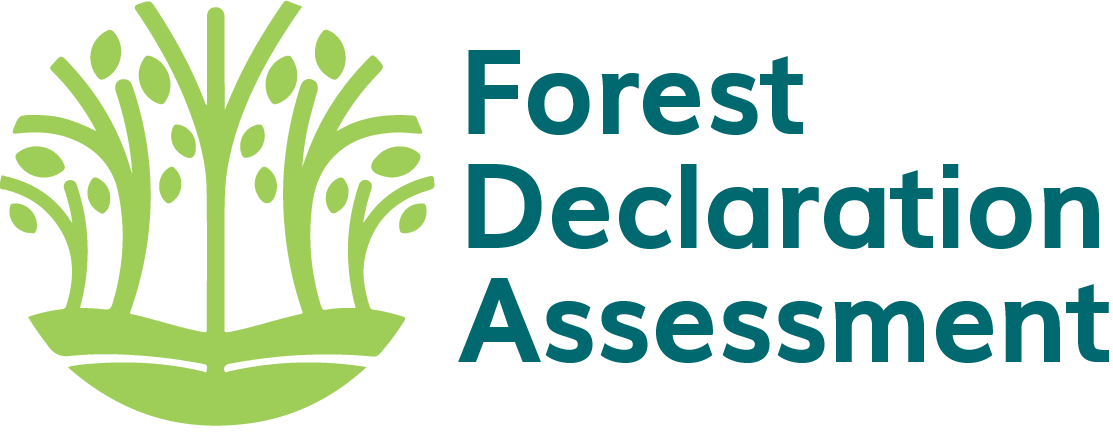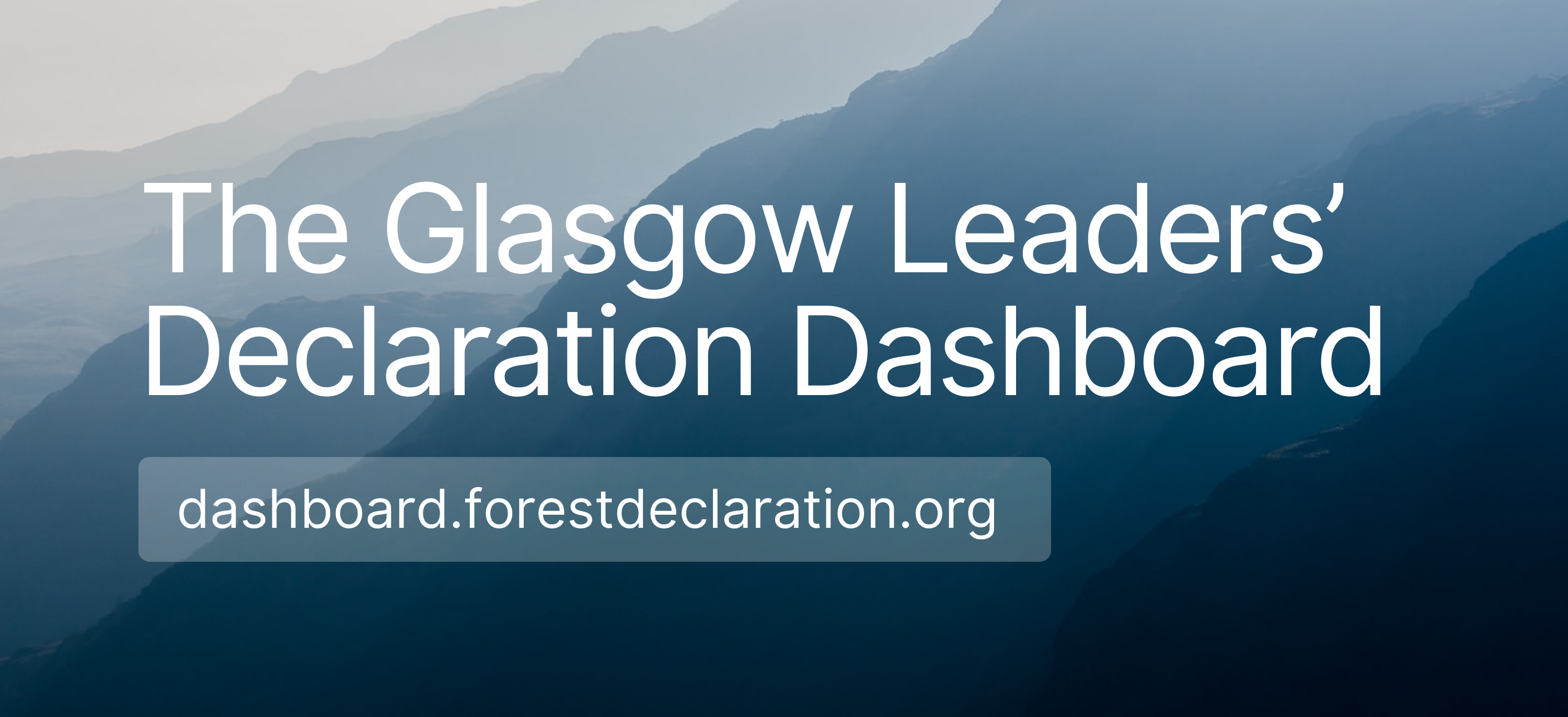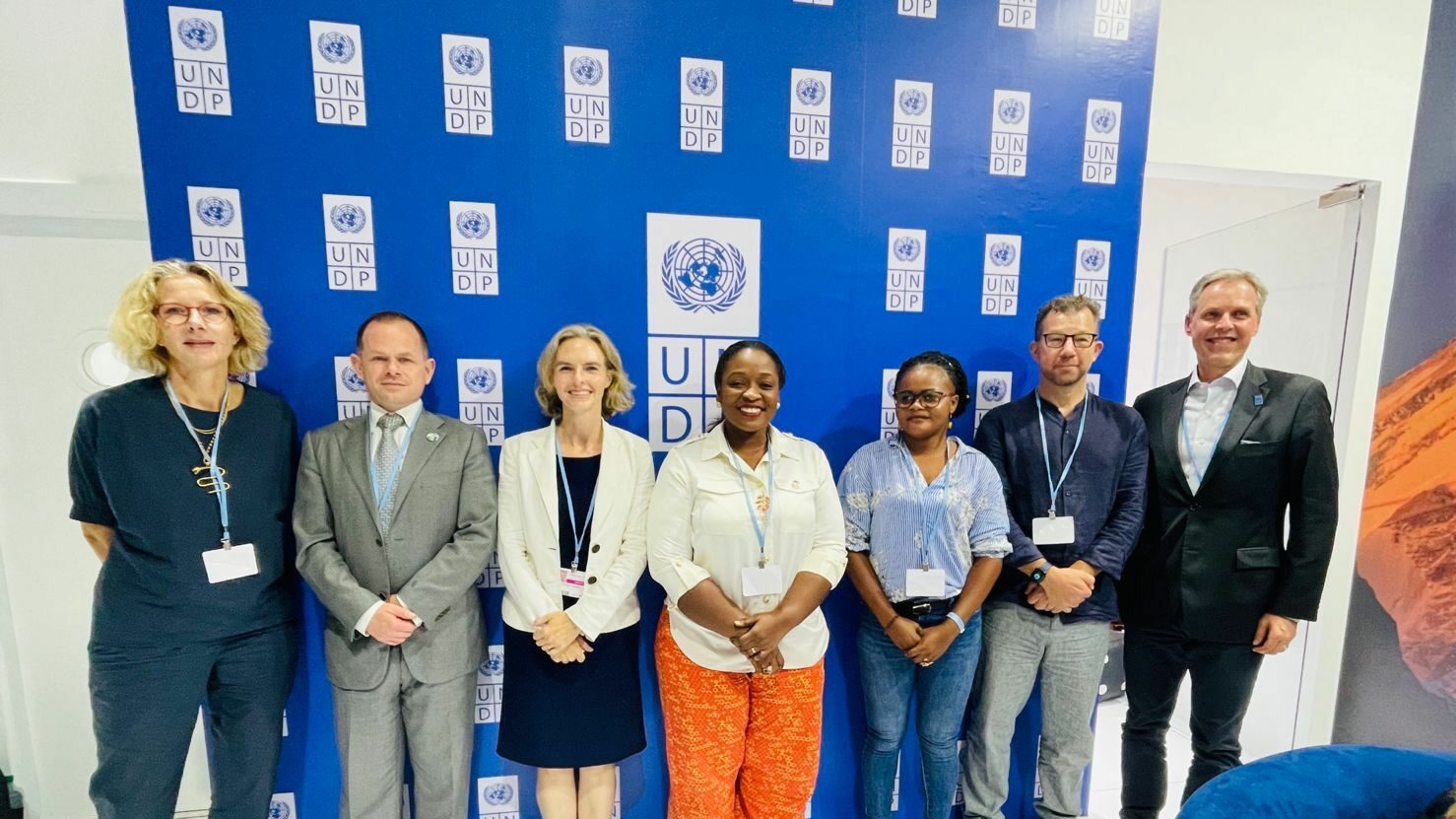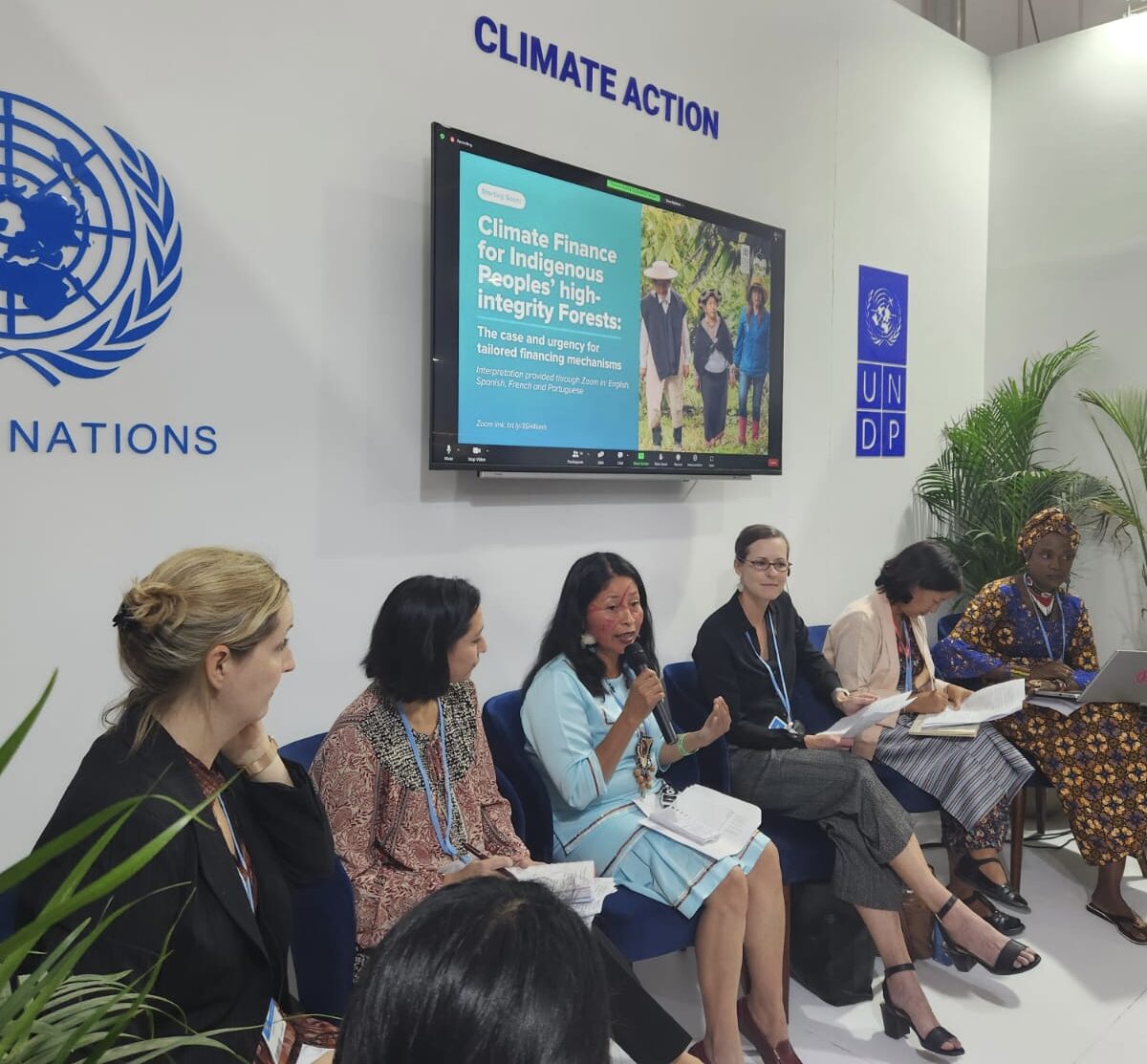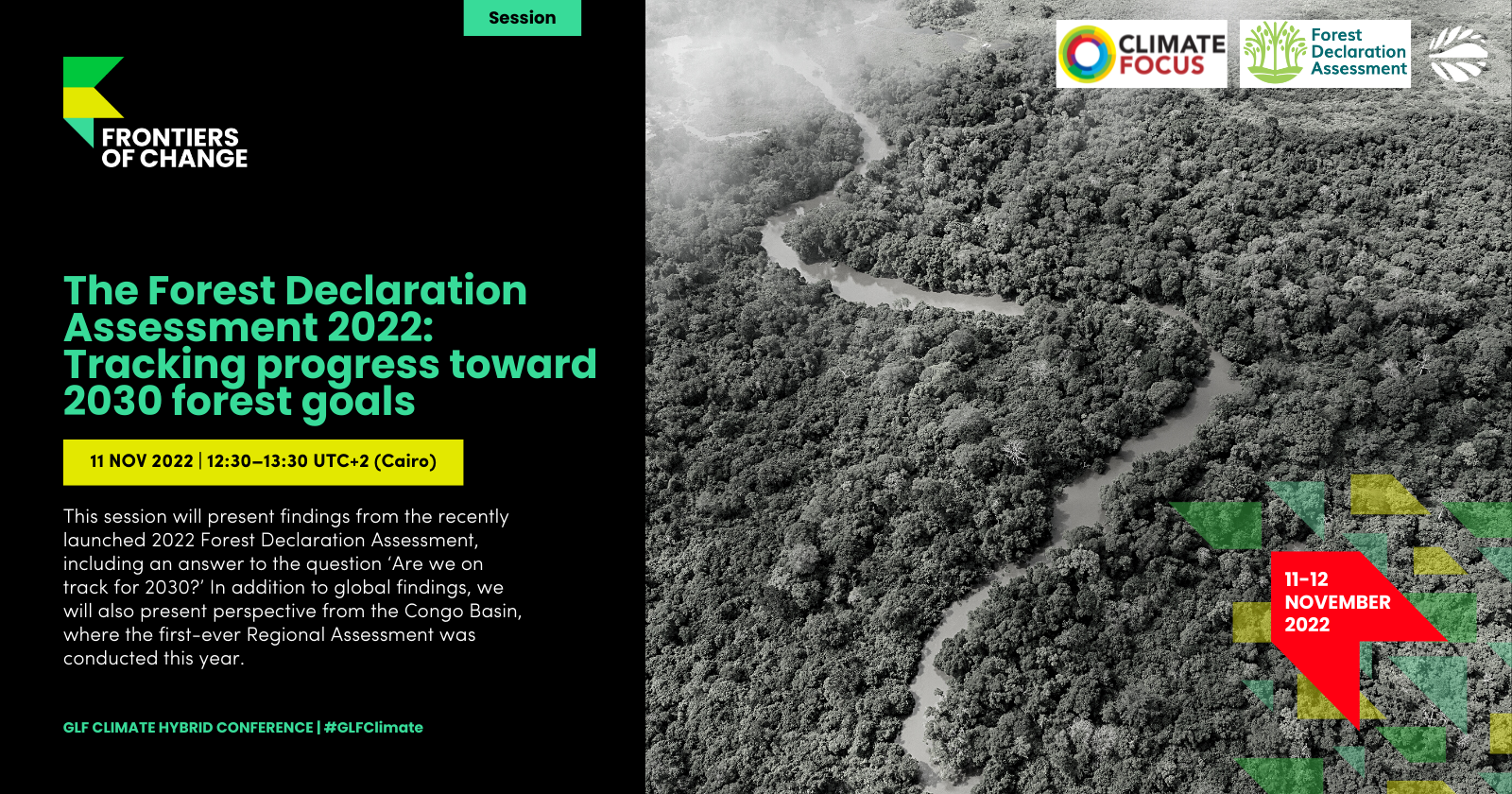Only seven years remain to achieve the twin global goals of halting and reversing deforestation by 2030.
Despite encouraging signs, not a single global indicator is on track to meet these 2030 goals of stopping forest loss and degradation and restoring 350 million hectares of forest landscape, according to the 2022 Forest Declaration Assessment conducted by a group of two dozen leading NGOs and research organizations.
A substantial increase in investments in forests and sustainable land use will be essential to meet the 2030 goals. At COP26 in November 2021, governments, companies, and foundations announced several ambitious pledges for forest finance. Pressure was high to demonstrate progress on these pledges ahead of COP27 in November 2022.
With the new year now underway, here is what you need to know about the last year of progress on forest finance:
- According to reporting available by the end of 2022, governments and the private sector committed or mobilized over five billion dollars* towards their forest finance pledges announced in 2021. In addition, a number of new partnerships were formed at COP27 that could accelerate investments for forests.
- Despite this progress, funding is still only a fraction of what is needed to meet 2030 goals, and these pledges represent just a few more drops in the bucket.
- So far, Indigenous peoples (IPs), local communities (LCs), and other marginalized groups have not received a fair share of finance. These groups still receive far less funding than they need for securing tenure rights and preserving forest ecosystems. Only 1.4 percent of total public climate finance in 2019-20 was targeted toward IPs and LCs, and only 3 percent of the financial need for transformational tenure reform is being met annually.
The Forest Declaration Assessment Partners, comprised of over two dozen leading NGOs and research organizations, call on governments, companies, and financial institutions to utilize all tools at hand to substantially increase their investments in forests, while also shifting finance away from harmful activities. To meet the world’s forest goals, 2023 will need to see
- Increased and appropriately dispersed forest finance
- Recognition of IP and LC voices and rights in forest decision-making processes, and
- Collective monitoring and progress assessments of forest finance.
*Funding estimate based on available reporting on existing forest finance pledges, and may include overlapping funding commitments and disbursements.
Where we stand on existing forest finance pledges
Did 2022 see progress on existing forest finance pledges? Yes – but it’s still not enough.
One year after the Glasgow Leaders’ Declaration on Forests and Land Use spurred action on forests, COP27 in Sharm el-Sheikh saw announcements that major forest finance pledges were on track to meet their commitments by 2025. Still, much more funding beyond these pledges is needed to meet 2030 forest goals. The 2022 Forest Declaration Assessment – a report led by a group of leading civil society and research organizations – found that 2030 forest goals will not be met at the world’s current pace.

The figure above includes three major 2021 forest pledges and their funding committed, mobilized, or disbursed by the end of 2022. Additionally, the Lowering Emissions by Accelerating Forest finance (LEAF) Coalition secured over USD 1.5 billion in commitments by November 2022 (though no payments have yet been transferred). Established in April 2021, the Glasgow Financial Alliance for Net Zero (GFANZ) – which has a goal of transitioning the global economy to net-zero greenhouse gas emissions – noted in their 2022 progress report that over 310 science-based interim targets were published by members. Additionally, by the start of COP27, the 2021 Financial Sector Commitment Letter saw over 30 financial institutions commit to eliminate commodity-driven deforestation from investment and lending portfolios by 2025.
Indigenous Peoples and other marginalized communities are not receiving their fair share of forest finance.
Indigenous Peoples, in particular, and local communities are the strongest custodians of forests, and strengthening their rights and participation in forest governance is essential for protecting these vital ecosystems. International finance pledges (like the IPLC Forest Tenure Joint Donor Statement or the Congo Basin Joint Donor Statement made at COP26) have attempted to address the finance gap for Indigenous Peoples and for the Congo Basin – the world’s second largest tropical rainforest and a major biodiversity hub. A recent overview by Chatham House (a Forest Declaration Assessment Partner) notes that few of the COP26 Congo Basin finance pledges are directly aimed at organizations led by Indigenous Peoples and local communities. Globally, these groups still receive far less funding than their estimated finance needs for securing tenure rights and preserving forest ecosystems. Only 1.4 percent of total public climate finance in 2019-20 was targeted toward their needs, and only 3 percent of the financial need for transformational tenure reform is being met annually.
New forest initiatives at COP27
Several new forest initiatives were debuted at COP27.
From philanthropic collaboratives to a partnership between the world’s largest rainforest countries, COP27 saw several forest-related initiatives emerge:
| Notable forest partnerships and developments announced during COP27 | Details |
| Forest and Climate Leaders Partnership (FCLP) | The FCLP sees over 25 countries holding one another accountable to their prior COP26 pledge to end deforestation by 2030. To this end, the FCLP will meet and publish a global progress report annually to track developments. |
| Memoranda of Understanding for Forest Partnership between the EU and each of five countries: Guyana, Mongolia, the Republic of Congo, Uganda, and Zambia | Five new Memoranda of Understanding for Forest Partnership were signed between the EU and Guyana, Mongolia, the Republic of Congo, Uganda, and Zambia. Each aim at reversing deforestation, thereby mitigating climate change and enhancing biodiversity protection. |
| Rainforest protection agreement between Brazil, Indonesia, and the Democratic Republic of the Congo (DRC) | At talks alongside COP27, the world’s three largest rainforest countries (Brazil, Indonesia, and the DRC) announced a partnership to cooperate on forest preservation. While this collaboration (which includes a “new sustainable funding mechanism” to help developing countries preserve biodiversity and reduce deforestation) is promising, its level of success largely depends on the recognition and inclusion of IPs and LCs. |
| Forest, People, Climate (FCP) | The FPC – a collaborative of philanthropic donors and civil society organizations – committed to mobilizing USD 1.2 billion in new philanthropic support over the next five years. On top of the USD 380 million over five years that FPC donors already planned to spend toward the goal, the new funding announced is USD 780 million. |
| Brazil signs the Glasgow Declaration on Forests and Land Use | Brazil’s then-president-elect Luis Inácio Lula da Silva sparked hope for the Amazon rainforest by signaling efforts to reverse the anti-environment policies of his predecessor, Jair Bolsonaro, at COP27. Lula pledged to achieve “zero deforestation and degradation of biomes by 2030,” joining the 145 other signatories of the COP26 Glasgow Declaration of Forests and Land Use. |
The above forest partnerships come amid increased attention on nature-based solutions. Take, for example, the newly-established Sharm el-Sheikh Implementation Plan that encourages countries to consider ecosystem- or nature-based solutions in their mitigation and adaption actions.
Visions for 2023
While 2022 saw progress on COP26 forest pledges, forest finance is still not flowing fast enough nor to the right destinations.
According to the Forest Declaration Assessment, domestic and international mitigation finance for forests averaged USD 2.3 billion per year between 2020-22—less than 1 percent of the total necessary financing. For comparison, between 2010-20, total grey public finance flows were estimated to total just over USD 270 billion: USD 257 billion in domestic finance and USD 13.4 billion in international finance. Almost 20 percent of total grey finance flows were provided to or in high deforestation countries. On average, grey public finance outweighs green public finance at a ratio of over ten to one.
The world’s forests need rapid disbursement of funds and an amplification of marginalized voices now more than ever, recognizing that the global climate crisis is inherently linked to global inequality. Mechanisms that guide finance flows to critical jurisdictions and communities need to be further developed and implemented. Collective monitoring and progress assessments of partnerships and other forest pledges will determine whether these promising trends turn into real implementation measures that recognize, protect, and restore all natural ecosystems – alongside the rights of IPs and LCs.
To meet 2030 goals, the Forest Declaration Assessment calls for nothing less than a radical transformation of development pathways, finance flows, and governance effectiveness and enforcement will be required to shift the world’s forest trajectory to attain the 2030 goals.
After the ‘implementation COP,’ we must do all we can to make 2023 the ‘implementation year.’
By Anna Rynearson, Bregje Drion, Claire Coviaux, and Franziska Haupt Photo by Wicak Baskoro/CIFOR-ICRAF
